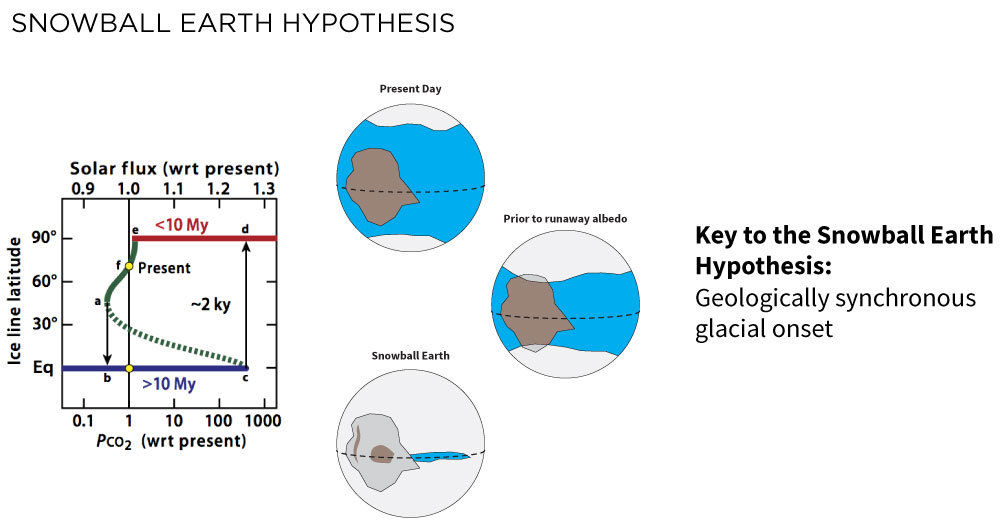 Snowball Earth hysteresis
Snowball Earth hysteresis
U-Pb age constraints and chemostratigraphy from the pre-Sturtian Tambien group, Ethiopia
In order to further test the Snowball Earth hypothesis, and better understand the initiation of these events, precise geochronology and chemostratigraphy from complete stratigraphic sections is needed. Most sections prior to the Sturtian glaciation, the first Neoproterozoic Snowball Earth event, are incomplete due to erosive contacts with the first diamictites. In other areas the sediments directly below the diamictite are not composed of carbonates, so no chemostratigraphic records can be developed. Here we present sections from the Tambien group in northern Ethiopia that go towards satisfying these requirements. The Tambien group is composed of shallow water carbonates and siliciclastics suitable for carbon and calcium isotope measurements, and contains occasional tuffaceous units that are amenable to U-Pb zircon dating. A U-Pb TIMS age of ~735 Ma for a tuffaceous horizons located directly above the nadir of the Islay carbon isotope excursion agrees with previous Re-Os age constraints, and confirms that this isotope anomaly precedes the Sturtian glaciation by ~18 Ma. Two dates from tuffaceous horizons 73 and 80 meters below the Negash diamictite confirm that it broadly correlates with the Sturtian glaciation. If sediment accumulation rates are assumed to be linear over million year timescales, the age of the first glacial sediments can be further refined. The age of the first glacial sediments in the Tambien based is estimated to be ~717 Ma using monte carlo simulations to estimate sediment accumulation rate. This age shows remarkable agreement with the only other high precision age constraint for the onset of the Sturtian glaciation (Laurentia), and is therefore consistent with the Snowball Earth hypothesis, where global synchronicity of glacial conditions is expected.